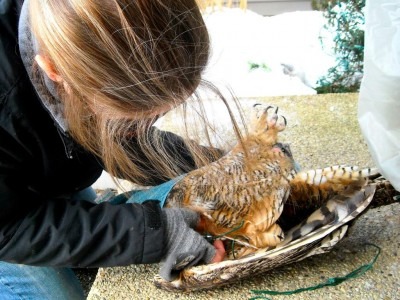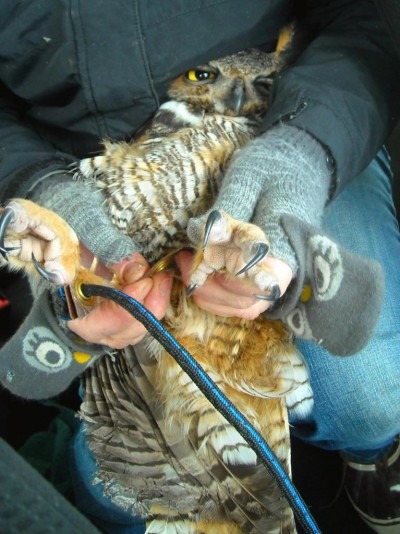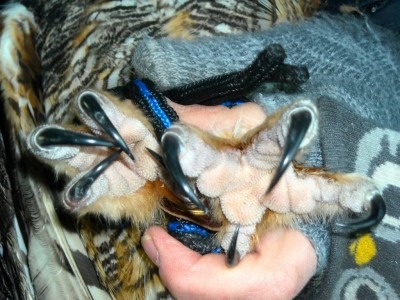I hate getting calls on injured raptors during nesting season. So when we received a call on an injured Great Horned Owl first thing this morning all I could think about was whether it had an active nest.
If it was a female with a brood patch (an area on her lower abdomen where she pulls out her feathers so that the warm skin rests directly on the eggs, or later, on the owlets to keep them warm), we would need to release her right away for the eggs or owlets to survive in these extremely cold temperatures. I would be somewhat surprised, however, to find a female off the nest this early in the nesting season – especially with last night’s -3 degree Fahrenheit low temperature.
If it was a male, then the female would be back at the nest waiting for him to hunt and provide her and the owlets with food. If he didn’t return promptly, then she would be forced to leave the nest, thus exposing the eggs or owlets to the cold temperatures and possible predation.
When we arrived, we found a male Great Horned Owl entangled in Christmas lights – the kind of Christmas lights that are like netting – easier to put up but much more likely to cause entanglements.
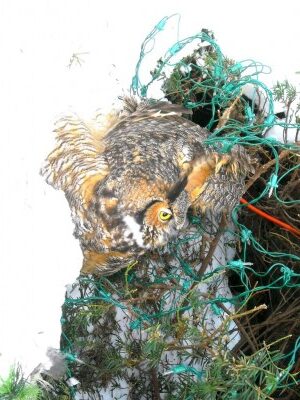

We proceeded to unplug the Christmas lights and began to cut them off of the owl. The lights were badly entangled around one wing. We covered his head, as possible, to reduce his stress.
Check out the nictitating membrane in this last picture. It is basically the third eyelid ![]() .
.
Once we removed the lights, we did a quick exam and found no fractures, tendon damage or significant bruising. Rather than bring him back to our Barrington facility for flight testing (we were just over an hour away), we decided to test him on a creance in a nearby field. We’d come prepared to do this just in case….
We went back to the van and drove to a nearby soccer field. We then proceeded to put on removable alymeri anklets (the leather things with the grommets) and jesses (the blue things you see in the picture).
We then took the owl to the middle of the soccer field and attached his jesses to a creance. A creance prevents a bird from flying away and slows him down gradually so that he doesn’t injure himself. Back before flight chambers, many rehabilitators only creance trained their rehabilitation birds prior to release. It’s really a suboptimal way to recondition birds, but it’s fine for a quick test since this bird’s breast muscles hadn’t yet atrophied from an extensive time in rehab.
(How do you like my owl mittens? And what about those talons?!)
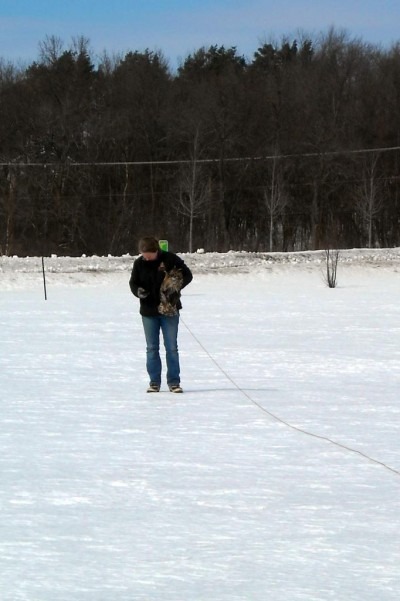
He flew strong on the creance, so back to the van we went where we removed the jesses and temporary anklets and then drove him home for release.
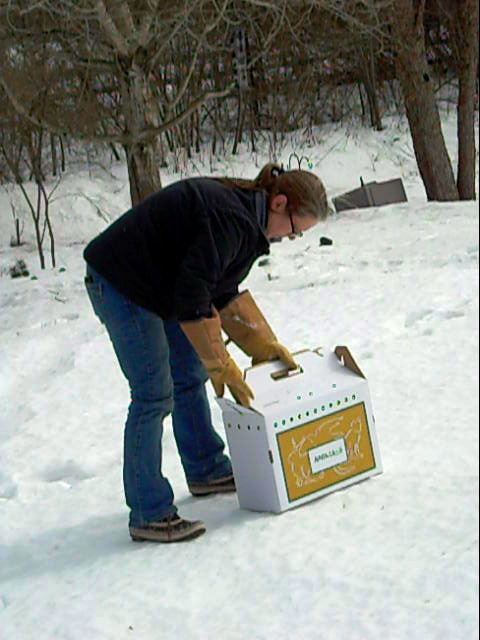
Good luck, Buddy!


